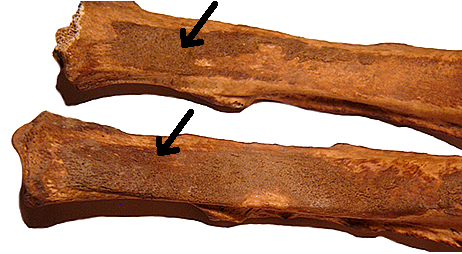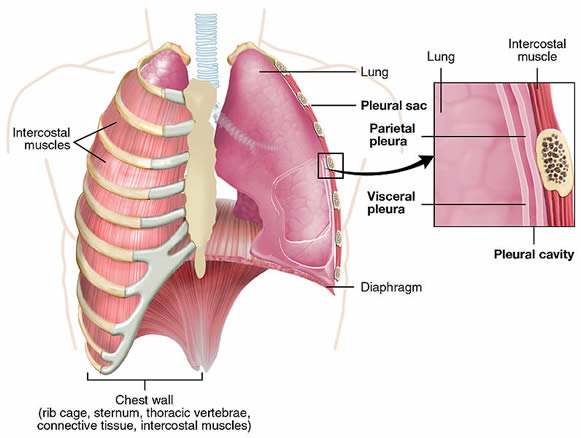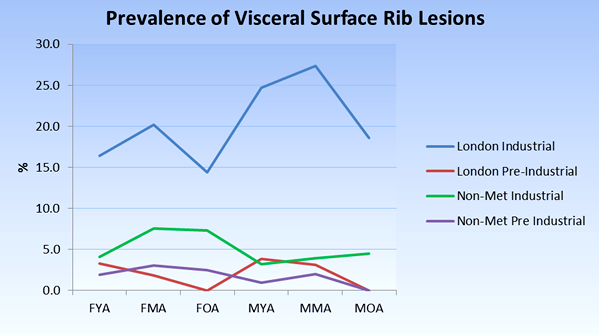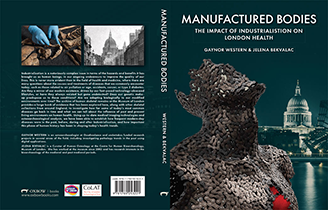The effects of air pollution on the human skeleton
So how we can we assess air pollution by looking at human skeletons? What happens to our bodies when we breathe polluted air into our lungs?
When we breathe in polluted air over a relatively long period of time (‘chronic’), the pollutant irritates the lungs and they become inflamed. Although the lung is soft tissue, we can see evidence of chronic inflammatory lung diseases in human skeletal remains because the outer lining of the lungs, known as the pleura, also becomes inflamed. The pleura is in contact is in contact with the inside surface of the ribs.
These layers of new bone on the inner surfaces of the ribs are called Visceral Surface Rib Lesions (VSRLs). By identifying these lesions in an individual, we can tell that they had some form of chronic inflammatory lung disease. This doesn’t mean that all people that had inflammatory lung diseases develop VSRLs, or that all the cases of VSRLs had the same cause. However, it is a good general indicator of respiratory illnesses in the past.
To understand the effects of industrialisation on air pollution and respiratory diseases in London, we calculated the percentage of the population living in London with VSRLs before and during the Industrial period. We also compared this to populations living outside of the city before and during industrialisation to see how living in London compared to other rural towns and villages.

Visceral Surface Rib Lesions (VSRLs) consist of bone formation on the inner surfaces of the ribs, seen here as dark brown deposits of new bone on top of the normal light brown rib surface (arrowed), Upton-on-Severn, Worcestershire (Ossafreelance)
From this data, we found that air pollution and respiratory diseases in London were over a staggering 6.5 times higher during the Industrial Period than before. VSRL rates rose from 2.9% to 19.5% in London during industrialisation. Outside the city, rates of respiratory disease also increased but by a much more moderate amount, from 1.6% to 4.2%.
Rates of respiratory diseases and the risk of exposure to air pollution in London during industrialisation differed according to your social status and whether you were male or female. If you were living in low status areas such as Bethnal Green, Bow or the poorer areas of Farringdon, for example, you were almost 3 times as likely to develop respiratory disease than if you lived in Chelsea, Hackney (which was high status at this time) or the well-off areas around Farringdon. Low status males were the worst hit. Almost a third of low status males had evidence for respiratory disease, indicating that they were the most at risk to air pollution.










